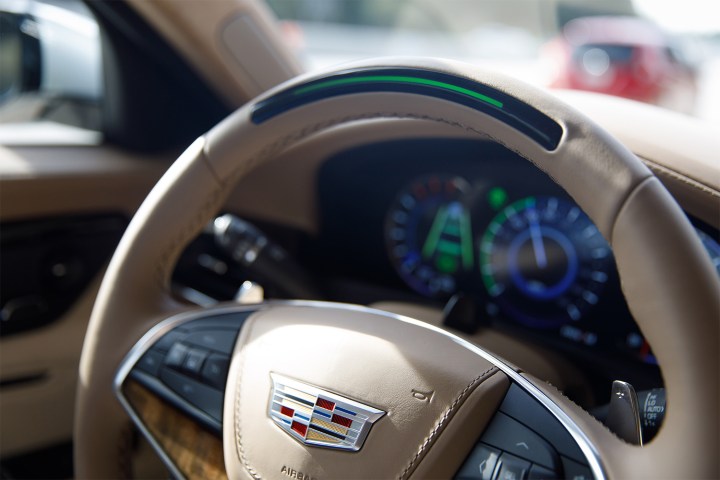
We’ve reached the point where there are enough advanced driver-assist systems on the market to do a comparison test, so Consumer Reports pitted Cadillac’s Super Cruise, Nissan/Infiniti’s ProPilot Assist, Tesla’s Autopilot, and Volvo’s Pilot Assist systems against each other. Cadillac came out on top, followed by Tesla, Nissan, and Volvo.
All four systems control the speed of a car in highway driving, and can take over steering to some degree in order to keep a car centered in its lane. Consumer Reports picked these four because they’re both capable and well-marketed, but the latter can lead to confusion.
Because these systems can control steering, acceleration, and braking, they’re sometimes mistaken for fully autonomous systems. Consumer Reports contacted Volvo because the automaker’s Pilot Assist system was listed under “Autonomous Driving” on its website; Volvo subsequently changed the language. Tesla has had difficulty ensuring its Autopilot users stay focused on the road.
Consumer Reports tested the systems on its Connecticut track and nearby highways, with each test car running as both a lead and follow vehicle. Super Cruise couldn’t be tested on the track because it only works on divided highways, the magazine noted. The systems were tested as they were configured in September 2018, but automakers may tweak them with over-the-air software updates, staff noted.
In terms of sheer capability, Super Cruise and Autopilot were the “clear winners,” according to Consumer Reports. Testers reported that both systems accelerated and braked smoothly, and kept cars centered in their lanes “for several miles at a time.” The Nissan and Volvo systems didn’t perform as well. They reportedly had trouble with hilly or curvy roads, and drifted out of lanes frequently. Nissan and Volvo representatives said their systems’ lane-centering ability was intentionally limited to keep drivers engaged.
In evaluating usability, testers found that Autopilot was the easiest to turn on, but that Super Cruise was the best at knowing when it was within its operational limits. If it can’t be activated, it tells drivers why, Consumer Reports said, and provides early warnings when the car is approaching merging lanes, off ramps, or difficult traffic patterns. Cadillac is also the only automaker to use a camera to ensure the driver’s eyes are open and focused on the road. Nissan, Tesla, and Volvo rely on pressure being applied to the steering wheel to gauge driver attention, which the magazine described as “insufficient.”
All systems issue audible and visual warnings if the driver stops responding, but they behave very differently from there. Super Cruise and Autopilot will slow a car to a stop in its lane and turn on the hazards, but Super Cruise will also call an emergency contact number. Cadillac and Tesla also lock out their systems after the driver fails to respond to warnings a certain number of times. Nissan’s ProPilot Assist applies hard braking in these situations, Consumer Reports said, while Volvo’s Pilot Assist simply turns off.
Consumer Reports advised car buyers to remember that this technology is in its infancy, and that there is no data to support manufacturer claims of improved safety. It added that buyers should try these systems when test driving a new car, and remember that they can’t replace a human driver. Automakers were advised to implement better driver monitoring.
“Driver monitoring becomes necessary when motorists can push a button and hand over control of the vehicle,” Kelly Funkhouser, Consumer Reports’ program manager for vehicle usability and automation, said in a statement. “Manufacturers have the ability to monitor drivers and use that information to respond when attention fades, rather than relying on ineffective warnings.”


